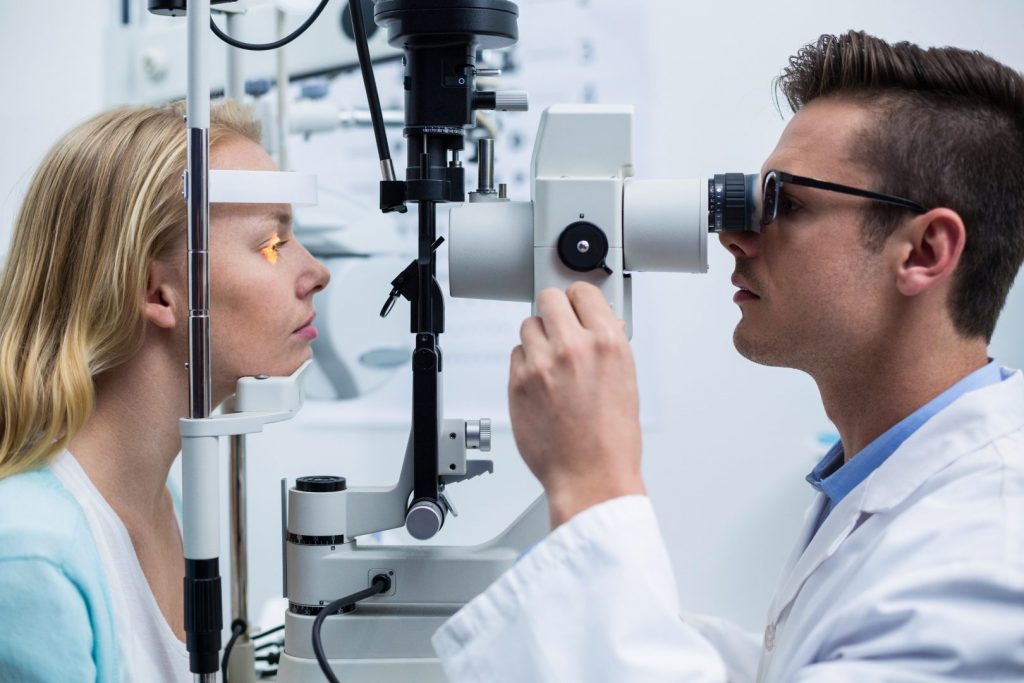
Vision checks are an important part of aging to spot important changes that can be corrected and to help us provide solutions for people as their vision needs change
Every month has at least one national, international, regional, state, or industry observance that we note because of its aging in place reference or implications. Some months have just one major notation (although there may be some lesser known ones that some people are aware of and observe), and a few have several of them. March is such a month with many.
The month of March contains the third most observances for our interests of any of the months with eight, distanced by September with eleven, and May with thirteen. These are just the most popularly reported and noted. There could be many others. Still, nine is a substantial number. One of them would be enough for any single month to give us something to focus on while four-five of them would mean roughly one cause or observance each week. Here we have double that – a very busy month!
The causes for March are sensory and cognitive in nature. In some months the focus is on safety, well-being, specific disease prevention, or mobility.
This month, the noted observances are “International Listening Month” (sensory), “World Plumbing Day” on March 11 (comfort and convenience), “National Developmental Disabilities Awareness Month” (cognitive and mobility), “Brain Injury Awareness Month” (cognitive, mobility, and sensory – all three), “Save Your Vision Month” (sensory), “National Nutrition Month” (possibly all three), “American Diabetes Alert Day” on March 27 (potentially all three), and “National MS Awareness Week (March 11-17) again potentially all three.
Notice how many of these diseases or occurrences that are specially observed this month impact more than one functional area of a person’s life and the number that touch on all three of them – sensory, mobility, and cognitive. This means that a person may suffer sensory issues from decreased or impaired vision, limited sensation to touch, and a reduced appetite. Their mobility may suffer due to joint stiffness, lack of range of motion, inability or freedom of movement, weaker balance, and the need for assistive support to move about the dwelling space. Cognitive issues are more complex but affect someone’s ability to understand their surroundings and to interact fully and completely within them.
As aging in place specialists – those interested in serving the public that have professional training or experience other than in the healthcare field, as well as occupational therapists, physical therapists, other medical personnel and professionals, designers, and contractors, to name a few of us – we need to be aware of what someone might be experiencing at any age and especially as they are reaching what most of us term as senior status.
We know that aging in place occurs from birth and that many infants, toddlers, and children are afflicted with serious diseases and ailments that impact their abilities to function normally. We are prepared to help modify and renovate their living space for their parents to help everyone in the home – the client and the rest of the family – cope with what is going on in the home.
As people age – and there is that young male daredevil age cohort of 15-24 who feel that they are invincible and able to do most any physical feat they think of, come upon, or are challenged to do – many serious accidents can happen. Many of these accidents lead to head or brain trauma (TBI) with lasting paralysis and other life-changing results. Many serious accidents seem to happen at random without notice and seemingly are unavoidable. That said, we can be on the lookout, and we can encourage this in our clients, for compromising situations to avoid the potential for serious injury.
Another ailment that does not pick its victims by age or ability is diabetes although there is some belief that lifestyle factors contribute to its onset and development. It is a very unpleasant disease with many complications that impact how someone is able to use their home over time. It can be treated and kept in check, but when it is not monitored or maintained, the consequences can be quite severe.
Diabetes can lead to the inability to feel one’s extremities (hands and feet) known as neuropathy. It can produce blindness in advanced stages (macular edema). It can result in kidney damage, amputations, stroke, and heart and kidney disease. as well. We need to know as much as we can about this widespread illness so we can help people with it, and as many as one-third of the population that is thought to have the disease is walking around with it undiagnosed and untreated.
March is indeed a busy month for observances and one with many implications for aging in place professionals like us to expand our knowledge and devise design scenarios to help people suffering from some of these conditions.
